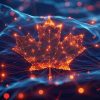If you’re planning to see the epic total solar eclipse that will dance across the skies of North America on Monday, you should aim to travel as close to the center of the celestial spectacle’s path as possible.
New map calculations have raised some concerns that the path of totality — where it’s possible to see the moon completely block out the sun — is slightly narrower than NASA calculated. That means some cities on the edge of the route that were expecting to experience a second or two of total darkness might be left out.
NASA has not changed its predictions, but the space agency advises that there is some uncertainty involved in mapping the eclipse’s path.
“Calculations that use a slightly larger radius for the size of the Sun yield an eclipse path that is slightly narrower,” said NASA spokesperson Karen Fox in an emailed statement. “This difference would only affect cities on the very edge of the path of totality, where blanket predictions are difficult regardless — a few city blocks one way or the other could mean 20, 10, or 0 seconds of totality.”
And for viewing purposes, NASA scientists and other experts recommend that spectators head for the middle, rather than the perimeter, of the path anyway.
“I would never, never be near the edge of where that totality is because it’s a difference between night and day,” said Dr. Edward Guinan, a professor of astronomy and astrophysics at Villanova University.
Mapping the moment
Recent questions around a potentially shifting path have focused on a new map calculated by Guildford, England-based software developer John Irwin and published to a webpage called Besselian Elements.
The research hasn’t been thoroughly reviewed by scientists, Guinan said. And even if the NASA map is wrong, Irwin’s calculations indicate it’s only off by a couple thousand feet on the edges.
Irwin did not immediately respond to an email request for comment Friday.
But few things in science are ever certain. And NASA also acknowledges that exact measurements of the eclipse path are difficult to pin down.
“(P)recise eclipse prediction has brought new attention to a tiny but real uncertainty about the size of the Sun,” NASA’s statement reads. “Uncertainty in the Earth’s rotation can also affect eclipse predictions on this level.”
Guinan explained that it’s extremely difficult to determine an exact measurement of the sun’s size because “it’s a fuzzy surface.”
He noted that the sun could be slightly enlarged right now because the our star is currently going through a period of maximum magnetic activity, which “could cause the sun to swell out a bit.”
But the uncertainty accounts for only a few hundred feet, while the moon is millions of miles across.
Still, even slight adjustments in the sun’s size could gently alter the edges of the moon’s shadow on Monday.
Edge effects
The Besselian Elements website advertises that people should consult Irwin’s alternative eclipse map if they’re hoping to travel to the edge of the path — where the length of total darkness may be extremely brief but onlookers could catch a prolonged glimpse of various other eclipse-related phenomenon.
Guinan notes that eclipses do offer “edge effects.”
“You wouldn’t see the total eclipse, but you would see this diamond ring effect — flashes of the sun going in and out behind mountains and coming through valleys on the moon,” he said. “That would be kind of cool to do if you have seen a lot of eclipses.”
“But I don’t recommend people do this,” he said.
NASA also said in its statement, “Traveling towards the center of the path of totality — even a mile or two — will quickly increase the length of totality that people can see.”
And totality is the real show, Guinan emphasized.
This phase of the eclipse will plunge the area into darkness. The temperature will drop. Animals will behave as if it’s nightfall. The sun’s corona — or its blazing hot, outer atmosphere — will be visible. Bright stars and planets will shine in the surrounding sky.
“When you see the total eclipse, you can’t go back,” Guinan said. “It’s spectacular.”
Don’t miss out on upcoming eclipse and space stories! Follow the Astronomy topic to see the latest stories in your personalized feed with your free account.







































